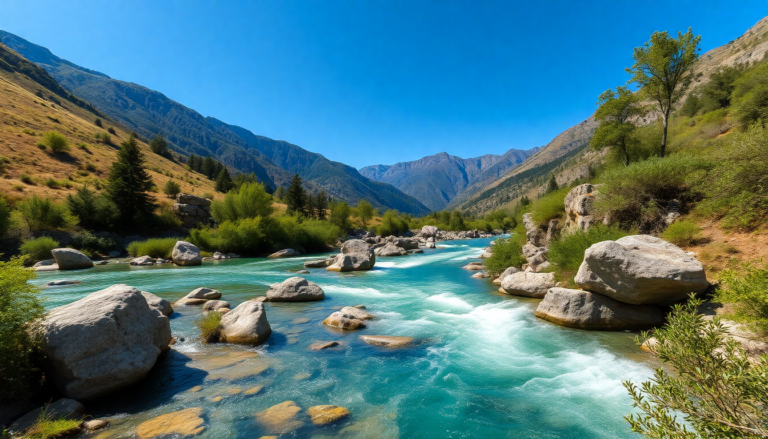Argomenti trattati
In a world increasingly dominated by urbanization and industrialization, there still exist pristine places where nature reigns supreme. One such country is Albania, famed for its breathtaking landscapes. Nestled within this natural wonder lies the Vjosa River, celebrated as Europe’s last wild river, flowing freely without dams or industrial barriers. This river is a living testament to the untouched beauty that still thrives in our modern world.
The remarkable journey of the Vjosa River
Originating from the Pindus mountain range in northern Greece, the Vjosa, known as the Aoos in Greece, meanders over 270 kilometers before merging into the Adriatic Sea, just north of the city of Vlorë. The most stunning stretches of this river are found in southern Albania, where it winds through canyons, gorges, forests, and ancient villages, creating a picturesque landscape that captivates travelers.
For years, this remarkable river faced threats from proposed industrial projects, including plans for multiple dams along its course. However, a significant victory for environmental protection emerged in 2023 when Albania designated the Vjosa River as a national park, marking the first of its kind in Europe. This pivotal decision has safeguarded the unique ecosystem of the Vjosa, which is home to over 1,100 animal species, including lynxes, bears, wolves, and more than 140 bird species, such as eagles and vultures.
A new era for tourism in Albania
Albania is experiencing a golden age in international tourism, driven by its authentic places and unique natural features. The region surrounding the Vjosa River is a prime example of this. Often referred to as the “Blue Heart of Europe,” this area is a paradise for trekking enthusiasts, kayakers, nature photographers, and advocates of sustainable tourism. Exploring the river’s banks allows visitors to discover ancient mule tracks, enchanting hiking paths, and stone bridges that showcase the artistry of ancient engineering, like the Kalogeriko Bridge and the Vradeto Steps.
Visiting areas adjacent to the Vjosa River also presents opportunities to delve into numerous historical and cultural sites. Among these are Orthodox monasteries, traditional villages, and spiritual places, such as the Monastery of Stomio, which narrates the story of a land seemingly suspended in time. Each step taken along the river reveals the rich tapestry of Albania’s history and culture.
The essence of the Vjosa River
The Vjosa River symbolizes a significant revival in tourism, embodying the wild beauty of Europe that continues to endure. It is a sanctuary of unspoiled nature, providing a protected habitat for rare and endangered species, while also offering a playground for outdoor activities such as trekking and rafting. The river is not merely a waterway; it represents resilience, a model for environmental conservation, and an opportunity to discover an authentic, welcoming, and still-secretive Albania.
Experiencing the Vjosa today means embracing a unique journey that respects the environment and stirs the soul. Before the last untouched corners of Europe fade into memory, the Vjosa River invites all to slow down, observe, and forge a connection with nature. It’s a call to adventure and a chance to immerse oneself in the serene beauty of a land that continues to inspire awe.

